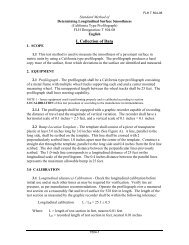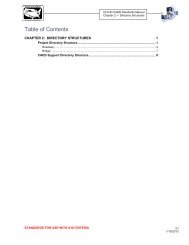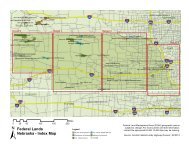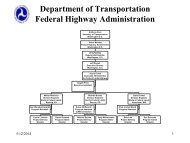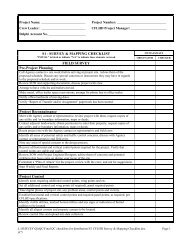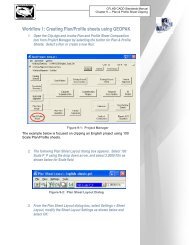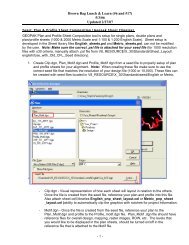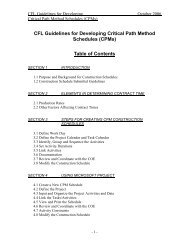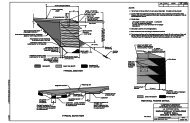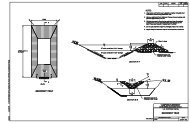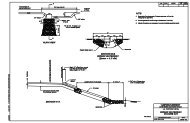CHAPTER 2 BARRIER WARRANTS
CHAPTER 2 BARRIER WARRANTS
CHAPTER 2 BARRIER WARRANTS
Create successful ePaper yourself
Turn your PDF publications into a flip-book with our unique Google optimized e-Paper software.
Barrier Warrants ________ November 20052.3 IDENTIFY POTENTIAL HAZARDS2.3.1 Potential HazardsOnce the desired clear zone is determined, fixed objects and roadside features that maybe hazards within the clear zone can be identified. There are many conditions thatpresent some degree of risk if struck but are not serious enough to consider shieldingwith a roadside barrier. Tables 2.3 through 2.6 list hazards and their potential severity.Severity increases from 1 to 3, with Group 3 being the more severe.Table 2.3: Fixed ObjectsPotential Hazard Group 1(Low Severity)Group 2(ModerateSeverity)Group 3(High Severity)Bridge piers, abutments and railing endsXBoulders, less than 0.3 m (1 ft) in diameterXBoulders, 0.3 m (1 ft) in diameter or largerXNon-breakaway sign and luminaire supportsXIndividual trees, greater than 100 mm (4 in) Xand less than 200 mm (8 in) diameterIndividual trees, greater than 200 mm (8 in)XdiameterGroups of trees, individually greater than 100Xmm (4 in) diameter*Utility polesX* Because of driver expectancy, a group of trees at a consistent offset for lengthy distances mayexperience lower encroachment rates, even though the offset may be within the clear zone. Insuch instances, it may be appropriate to consider the trees a Group 2 hazard.Figure 2.3: Unshielded Bridge Rail End________________________________________________________________________2-8 Identify Potential Hazards



